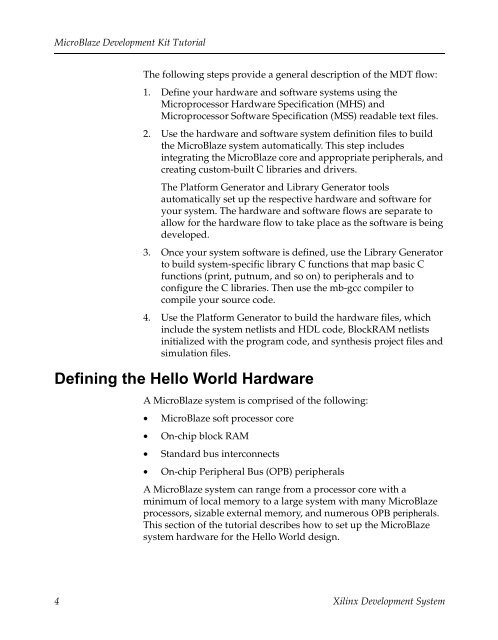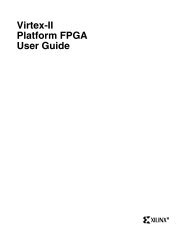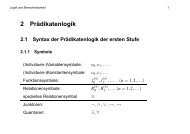MicroBlaze Development Kit Tutorial - Xilinx
MicroBlaze Development Kit Tutorial - Xilinx
MicroBlaze Development Kit Tutorial - Xilinx
Create successful ePaper yourself
Turn your PDF publications into a flip-book with our unique Google optimized e-Paper software.
<strong>MicroBlaze</strong> <strong>Development</strong> <strong>Kit</strong> <strong>Tutorial</strong><br />
The following steps provide a general description of the MDT flow:<br />
1. Define your hardware and software systems using the<br />
Microprocessor Hardware Specification (MHS) and<br />
Microprocessor Software Specification (MSS) readable text files.<br />
2. Use the hardware and software system definition files to build<br />
the <strong>MicroBlaze</strong> system automatically. This step includes<br />
integrating the <strong>MicroBlaze</strong> core and appropriate peripherals, and<br />
creating custom-built C libraries and drivers.<br />
The Platform Generator and Library Generator tools<br />
automatically set up the respective hardware and software for<br />
your system. The hardware and software flows are separate to<br />
allow for the hardware flow to take place as the software is being<br />
developed.<br />
3. Once your system software is defined, use the Library Generator<br />
to build system-specific library C functions that map basic C<br />
functions (print, putnum, and so on) to peripherals and to<br />
configure the C libraries. Then use the mb-gcc compiler to<br />
compile your source code.<br />
4. Use the Platform Generator to build the hardware files, which<br />
include the system netlists and HDL code, BlockRAM netlists<br />
initialized with the program code, and synthesis project files and<br />
simulation files.<br />
Defining the Hello World Hardware<br />
A <strong>MicroBlaze</strong> system is comprised of the following:<br />
• <strong>MicroBlaze</strong> soft processor core<br />
• On-chip block RAM<br />
• Standard bus interconnects<br />
• On-chip Peripheral Bus (OPB) peripherals<br />
A <strong>MicroBlaze</strong> system can range from a processor core with a<br />
minimum of local memory to a large system with many <strong>MicroBlaze</strong><br />
processors, sizable external memory, and numerous OPB peripherals.<br />
This section of the tutorial describes how to set up the <strong>MicroBlaze</strong><br />
system hardware for the Hello World design.<br />
4 <strong>Xilinx</strong> <strong>Development</strong> System
















